As often happens, I started looking at one person only to open a whole can of worms and end up looking at three unknown female artists. I started by looking at this...

Watching the Birds (undated) Frances Elizabeth Grace
Okay, so this little moppet may not look like much, and I'm damned if I can see any birds, but it is a little gem that hangs on the walls of Southampton Art Gallery. It's only 27cm by 38cm, so not huge, but there is a certain feeling about it, a wistful, melancholic longing for something beautiful to appear in this little girl's life. She is looking for nature in a brick forest under a grey-yellow sky. I love it. Obviously, I wanted to know more about Miss Frances Elizabeth Grace...
There are not many of Frances' paintings in public hands in the UK, but two of them are with Brighton and Hove which is unsurprising as Frances was a Hove girl from cradle to grave. In fact, her family pretty much stayed put (with a couple of exceptions, one of them scandalous, hurrah) within a small area of Hove for all their lives. Frances was born in 1857, the second daughter to William (1824-1870) and Frances Elizabeth senior (1825-1891). It is rather unusual for a mother and daughter to have exactly the same name, but this might explain why Frances junior was also known as Lily or Libby Grace within her career, which makes my job that bit more difficult, thanks very much. We'll come to that in a bit.
William was a linen draper, a living that afforded them servants and a very pleasant house on York Road in Hove. He married Frances Elizabeth senior in the summer of 1852, and along came eldest daughter Ellen Maud in 1854. Frances junior followed in 1857, then Harriette (or Harriet, spellings vary) in 1860, Anna Maria in 1861, William Francis in 1864, then finally Olive Blanche in 1870. In the 1861 census, the family had settled in York Road, with William listed as a linen draper's assistant and they had a servant, 18 year old Martha Gibb.
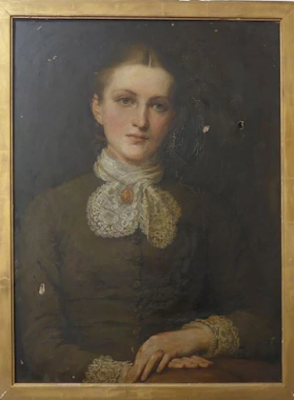
Alice (undated) Harriette Edith Grace
Four days after the birth of the youngest child, Olive on 10th September 1870, William died suddenly and unpleasantly. He had been promoted at Hannington and Sons drapers, but the amount of work her was expected to do made him anxious and affected his health. When his employers spoke to him about changes to his working conditions, he regularly burst into tears. On 10th September, he walked off the chain pier, leaving behind his hat with a note pinned to it - 'Mr Samuel has again reduced my strength in the warehouse and at the same time expects me to do more business. I cannot bear it. Itis unkind and unreasonable. He has driven me mad - WILLIAM GRACE. May God help my poor wife and family, I cannot.' William drowned before anyone could reach him. He was 45 years old. I think it is interesting (and stokes class war in my soul) that his employers were completely exonerated at the inquest and William was just written off as mad and unable to function.
Quite how the family managed is another thing. We have often heard of family tragedies in these posts but the double blow of the loss of William (and his wages) together with the public knowledge of his suicide, not to mention the blame he laid at his employers doors, much have made life very hard for Francis senior and her children. In the reports of the inquest, William's employers were completely basically praised for putting up with such a temperamental employee and all blame was put on William's wobbly mental health which obviously explained everything to the Victorian readers. I think it is remarkable that the family continued and flourished in the light of such a tragedy.
By 1876, Frances junior (who I'll call Libby to make life easier and seems to be what the family called her), Harriette and Anna were all at Brighton School of Art and Science, receiving awards for their work. Anna received an award for her freehand drawing, and an excellent commendation for her model drawing. Prizes of the third grade awarded at South Kensington were given to Libby and Henriette and Libby was part of the selection for the National Competition, where works from all the art schools in the country select their best work. She went on to win the National Gold Medal in conjunction with a Princess of Wales scholarship for her work. In 1879, in the Annual Exhibition of the Royal Society of British Artists, Harriette showed An Old Oak which was sold for £3 3s. She also started teaching at Brighton Art School, who announced her presence proudly as a graduate of the RA and a silver medallist. Interestingly, Harriette was one of the students at the RA who signed the famous petition to allow female students to draw from a semi-draped model.
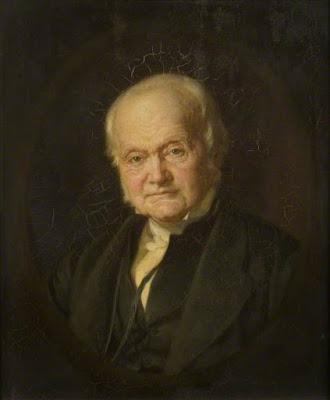
Reverend William Thursby (1894) Harriette Edith Grace
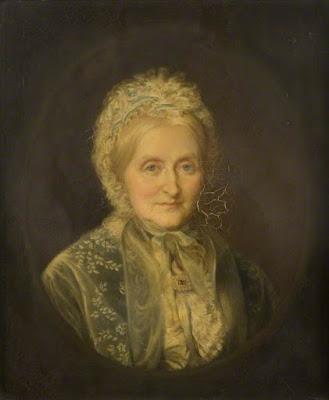
Eleanor May Thursby (1894) Harriette Edith Grace
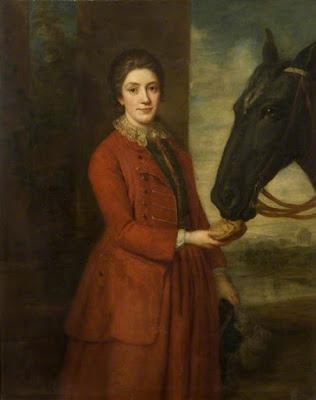
Anne Thursby, daughter of William Hanbury of Kelmarsh (1893) Frances Elizabeth Grace
A quick note on the pictures here - as I have said they are few and far between but the ones we have raise a lot of questions. Take these three portraits by Harriette and Libby. I felt there was definitely something up with them in terms of style and so I thought I'd have a look into who the people were. They were all done around the same time and Anne Thursby (1742-1823) was actually the mother of William Thursby (1795-1884). He was married to Eleanor (1803-1883) and as you can see, none of them were alive at the time of the portraits so I'd love to know why they were created. William and his wife were local to Hove, so possibly he was important in the town. All three paintings are now the property of West Northamptonshire Council, probably because that's where Kelmarsh is, but who commissioned them in the first place? So many questions...
In the 1881 census, all three girls are still listed at art school, with William junior and Olive still at school. Eldest sister Ellen married in 1874 to William Michael Quirke, a salesman from Limerick, and went on to have 11 children, all but one having impressively long lives. 1881 was also the year that Harriette and Libby first appeared at the Royal Academy, Harriette with a portrait of Mrs Sussex Lennox and Libby with Blanche. Although I started by looking at Libby, it very quickly became apparent that Harriette was probably the most successful of the three sisters (the Charlotte Bronte of the three, if you will). Her portraits appeared more often than either of the two other sisters managed - in 1882, she showed Mrs Kingsmill of Sydmonton and in 1884 she showed Elsie, Daughter of J Watney Esq, which was mentioned in The Artist magazine. Anna joined both sisters in the 1886 Royal Academy - Anna showed Portrait of a Boy, Libby showed "Dark nor Light..." based on a poem by Keats, and Harriette had two pictures, "These Are Ancient Things" and Conal. There is a lot to unpack in these titles and sadly we do not have accompanying images. Obviously, I'd love to see Libby's piece that is based on Keats as I can shove her into the Pre-Raphaelites because I know people love it when I do that. I wonder if Conal is anything to do with their Irish brother-in-law, as Conal was an ancient bishop from Ireland. I'm guessing These Are Ancient Things is a biblical piece from Harriette as it seems to be framed as a quotation. It might also be to do with these images...
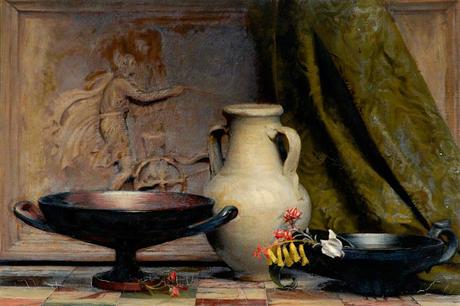
Still Life (c.1879) Harriette Grace
Mind you, have a look at this one by Libby...
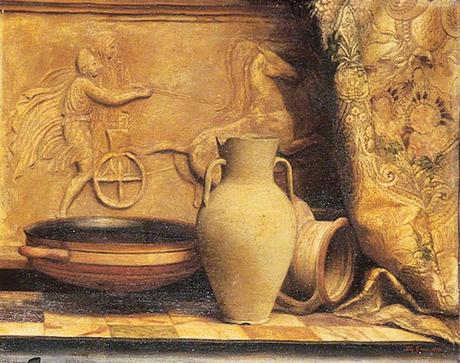
Still Life (c.1877) Frances Elizabeth Grace
oh, and this one...
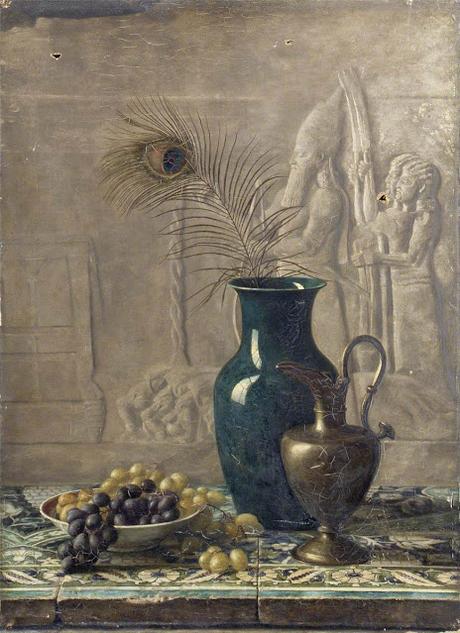
Still Life (undated, but I think we can have a guess) Frances Grace
It's a matching set! The frieze behind the first two is the same, so either it was a piece at the art school or in their home. It would be tempting to think it was the work of one artist but you can see differences in the handling of the material. I like Harriette's flower but Libby's peacock feather wins it for me. They also remind me of other works of art that were responses to things like the Parthenon Friezes, such as Julia Margaret Cameron's 1867 Version of Study after the Elgin Marbles or Alma-Tadema's 1868 Phidias Showing the Frieze of the Parthanon to his friends. In 1887, Anna was at the Royal Academy alone with a miniature portrait of Edith Constance Wood which appears to be her last piece at the RA. Harriette continued, showing two pieces in 1890, one portrait and A Study of Colour. She also had a piece in the 1891 exhibition from a poem by Henry Wadsworth Longfellow, entitled Grandmother Dear: " What would the world be to us if the children were no more?". The Grace sisters appeared at the 1888 Women's Art and Industry exhibition at the Brighton Pavilion, and also showed their work at the Ditchling exhibition of 1889, gaining a favourable mention in the Mid Sussex Times - 'The pictures of the Misses Grace all deserve attention, and are well-known to frequenters of Brighton exhibitions. Particular mention may be made of a "Portrait of a Man" by Miss A. M. Grace, "A Daughter of Erin" by Miss H. E. Grace, "In the Cloisters, Westminster Abbey" by Miss F. Grace and a capital picture entitled "At the Cross Roads, Ditchling."
The Southern Weekly News in 1890 recorded all three sisters' paintings in an exhibition once more, mentioned as the 'Misses Grace.' Libby showed a painting entitled The Model's Rest which was praised as a charming study of a very beautiful girl. Harriette's still life was both simple and distinguished and Anna was described as 'a lady full of promise as an artist.' By the 1891 census, Libby, Anna and Harriette were all listed as portrait artists and teachers. William had become a mining engineer (I'm coming to him) and Olive was a mathematics teacher. Their household included two servants, one a trained invalid nurse, presumably for Frances senior, who died shortly after the census was taken. William began to travel with his work, going to South America, then to Australia. I am particularly grateful to the internet for a family painting of William by Libby in his South American garb...
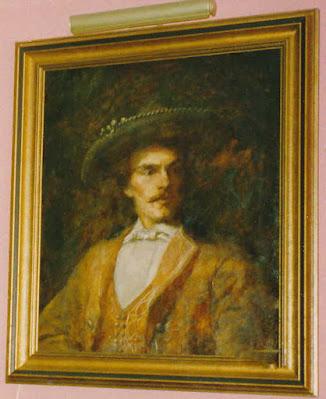
William Grace (undated) Frances Elizabeth Grace
William went on to marry Ellen Browne, the daughter of a gentleman, at St Andrew's Church, Coolgardie in Western Australia, in March 1899. The couple returned to Hove and began their married life there, their son Francis arriving in 1900. By 1901, the family were in Australia once more and then William was offered a job in Mexico for a short period. The family returned to Hove, but William's absences were very frequent and often lasted more than a year at a time. Homesick, Ellen returned to Australia just William got a job in New Zealand. In the resultant divorce paperwork (spoiler alert), William lists how often he was away and it is a great deal, with his holidays cut short by the demands of his work and Ellen seemed to move between England (her married home) and Australia (her birth home) without a lot of joy in her life. The last time he saw his wife as 1912, so he was rather surprised when Ellen gave birth to a second child in December 1914. As William explained in the paperwork, he had not been within 6000 miles of his wife in two years, so he was fairly certain the child was not his. Just to make sure, I had a look at the birth certificate for Stephen Robert, born on 22nd December 1914 and his father is listed as Emil Fox, an oil broker's manager. William married again in 1916, but then died a few months later. His widow was Grace Wood, who lived with the splendid married name Grace Grace.
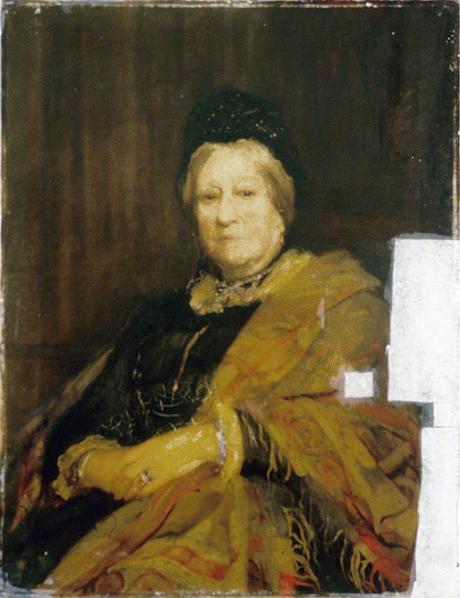
Lady Abinger (1883) Frances Elizabeth Grace
Back to the girls, Ellen was widowed in 1918, but managed to not lose any of her sons in the First World War, which is a bit of an achievement. She settled to a life of comfortable widowhood and taught music in her home which was only a few streets from her sisters. Olive never married, remained a maths teacher and again lived very close. Back to the Three Artists...
Libby and Harriette both appeared in the 1894 Royal Academy, Libby showing A Daughter of Erin and Harriette showing Fruit. I wonder if Libby's picture was the one mentioned in the Ditchling exhibition attributed to Harriette, or another one on the same subject? This was Libby's last RA. Harriette appeared twice more, in 1898 with Nasturtiums and 1900 with Still Life which could well be the picture above. In 1899 Harriette started a Sketching and Copying Club from the sister's home in York Road which was warmly recommended in Girls' Own Paper in both July and September of that year. Anna not only painted but seems to have started a women's orchestra in 1915 which practiced every Tuesday afternoon in their York Road home and other locations. For the sake of the other sisters, I hope they were good...
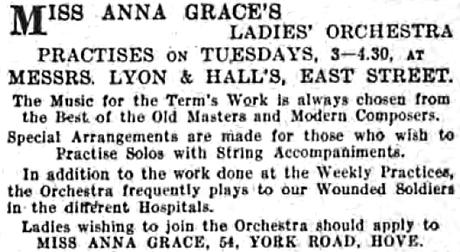
This is where I run out of information on the Grace Sisters. Harriette died of bronchial pneumonia in 1932, leaving her money to one of Ellen's children. She alone received an obituary in the West Sussex Gazette stating that she and her sisters were much respected and it was almost fashionable to be painted by them. Libby, Anna and Harriette had held a very successful exhibition in Hove public library just weeks before Harriette's death and the day after her death, one of her sketches of Ditchling appeared in the newspapers. Anna died on 1st June 1939, followed by Libby on 23rd September, all of them missing the 1939 census which was on 29th September 1939. Olive died the year after, followed by Ellen in 1943.
I think families of artists are fascinating. Along with my obsession of husband and wife artistic duos, I'm very much interested in whole families of painters, and I'd love to see an exhibition that explores this subject. It's a shame that we have so little of the Grace sisters' work and what we have I don't think fully expresses how interesting they were. In the meantime, I will go and watch that little girl watching the birds in Southampton.

